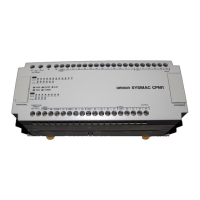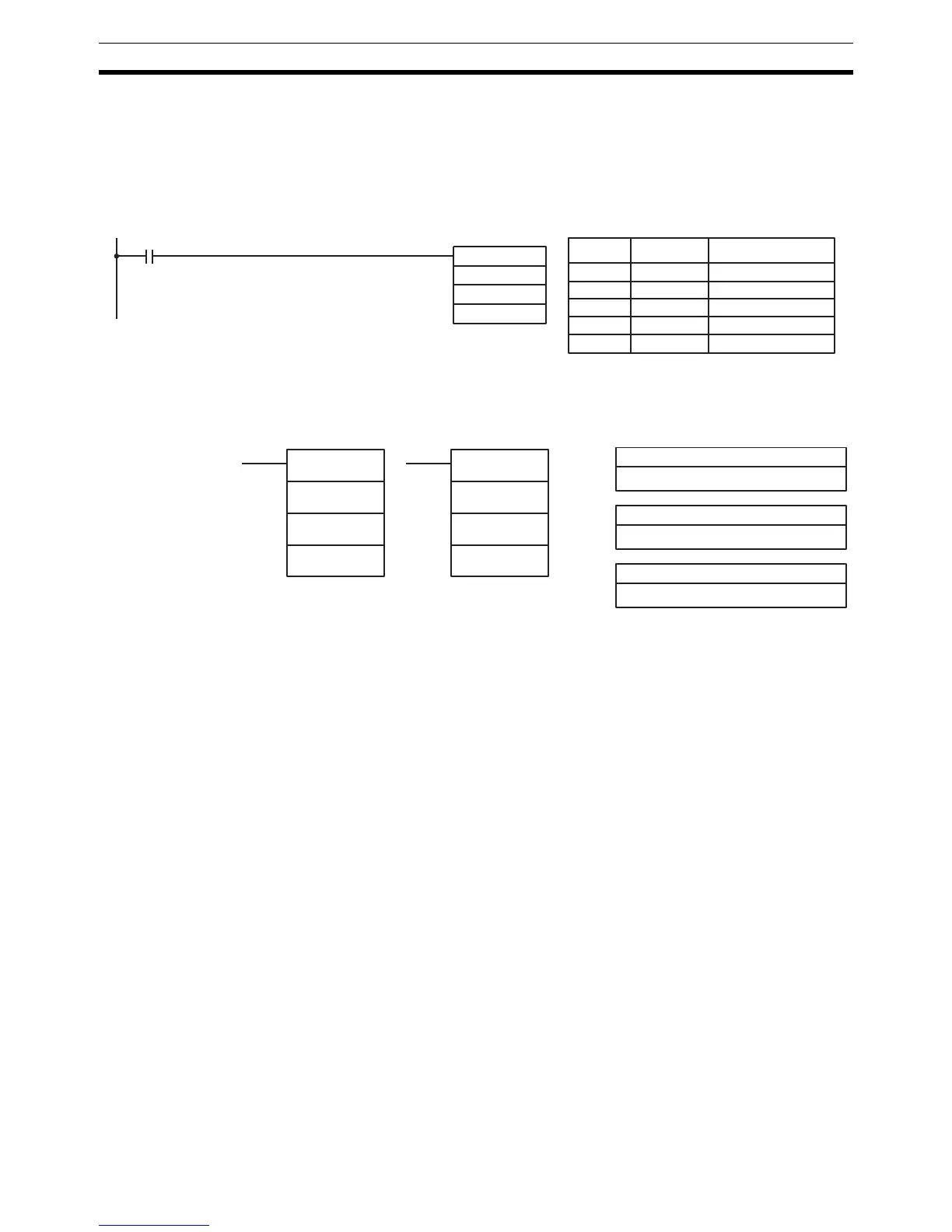282
Conversion Instructions Section 5-19
Indirectly addressed DM word is non-existent. (Content of *DM word
is not BCD, or the DM area boundary has been exceeded.)
D and D+15 are not in the same data area.
EQ: ON when the content of S is zero; otherwise OFF.
Example The following example shows how to use COLM(––) to move the contents of
word DM 0100 (00 to 15) to bit column 15 of the set (DM 0200 to DM 0215).
5-19-172’S COMPLEMENT – NEG(––)
Limitations This instruction is available in the CQM1-CPU4@-E/-EV1 only.
DM 6144 to DM 6655 cannot be used for R.
Description Converts the four-digit hexadecimal content of the source word (S) to its 2’s
complement and outputs the result to the result word (R). This operation is
effectively the same as subtracting S from 0000 and outputting the result to R;
it will calculate the absolute value of negative signed binary data.
If the content of S is 0000, the content of R will also be 0000 after execution
and EQ (SR 25506) will be turned on.
If the content of S is 8000, the content of R will also be 8000 after execution
and UF (SR 25405) will be turned on.
Note Refer to 1-10 Calculating with Signed Binary Data for more details.
Flags ER: Indirectly addressed DM word is non-existent. (Content of *DM word
is not BCD, or the DM area boundary has been exceeded.)
EQ: ON when the content of R is zero after execution; otherwise OFF.
UF: ON when the content of S is 8000; otherwise OFF.
COLM(––)
DM 0100
DM 0200
#0015
00000
Address Instruction Operands
00000 LD 00000
00001 COLM(––)
DM 0100
DM 0200
# 0015
S: Source word
IR, SR, AR, DM, HR, TC, LR, #
Ladder Symbols Operand Data Areas
R: Result word
IR, SR, AR, DM, HR, LR
NEG(––)
S
R
000
@NEG(––)
S
R
000
000
Not used. Set to 000.

